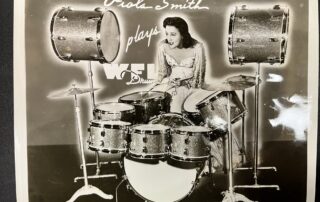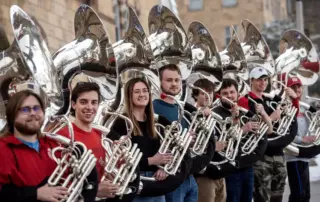Oulu is a small town sandwiched between Highway 13 and Highway 2 in northern Wisconsin, just north of Brule. Originally it was settled entirely by Finnish immigrants, including Sue Vojacek’s grandfather.
Sue met her husband Anton Vojacek, a Bohemian and Polish artist, while attending art school in 1972. They decided to purchase land in Oulu to build their home and set-up a small art studio.
Their house took on the shape of a giant mushroom, with a revolving roof made of foam and windows to capture the sun.
“We just started building and eventually we added the studio for glass blowing and then later the gallery,” Sue said.
Sue became an art teacher and Anton worked in construction, but their true passion was creating glass. They still used an ancient mixture to make their glass that requires it to melt for about three days.
“I was just enamored right from the get go,” Anton said. “We call it a soft glass, it’s basically silica sand, soda ash and limestone. It’s a formula that has been around since the invention of the bullet pipe, and that’s roughly 2,400 years ago,”
In order to get glass out of the furnace they use solid rods and hollow pipes. The glass is actually clear, but appears orange because of the heat.
“You’ll go in and you’ll gather your glass. It’s at about 2,150 degrees Fahrenheit, it doesn’t have any color,” Sue said.
Every time they touch the glass piece with a tool to shape it, it cools down requiring them to put it back in the oven to reheat. It is a process that is repeated over and over.
“I’ve got to smooth the lumps out of the glass to make it more symmetrical because the next thing I’ll do is blow into it to make it hollow. That’s why it’s called glass blowing, there’s really not all that much blowing involved in glass blowing,” Anton said.
The glass will continue to look orange until it cools down to around 900 degrees, when the true clear color of the glass starts to show. Their work requires Anton and Sue to work in tandem with each other.
”You don’t have enough hands and arms to do all that yourself,” Sue said. “There’s a partnership you have to develop. Some people call it a dance, they like watching it because it goes so smoothly and we know what’s going to happen next. You don’t have a lot of time to talk about it.”
Using crystals, Anton and Sue add color to the glass and the reheat it in the furnace .
“You’ll roll it in the color and then you’ll heat that up in what’s called a glory hole and that will meld the colors together. The hotter the glass is the easier it moves. I like to think of it as room temperature honey,” Anton said.
When the glass art is shaped to perfection, it is put in another furnace to slowly cool down so that it won’t break when it is cool enough to touch.
Anton and Sue typically start blowing glass in the middle of the November and finish in January when the temperatures are cooler.
”We also give classes at that time, so it’s a lot more comfortable,” Sue said.
The Vojaceks receive visitors from all over the world, including Australia, England, Germany and Finland. Visitors can watch, shop and ask questions. Overall, the couple could not be happier with their glass blowing business.
“I think the different things you can do with glass, it’s amazing,” Sue said.
At the same time, Anton recognizes that the process is not fool proof and being successful requires a lot patience.
“You’re going to fail, you’re going to make some mistakes,” Anton said. “It takes patience. Glass is one of those materials that whatever you bring to it it’ll give back to you.”
Glass Blowing Technique Powered by Cow Dung
It wasn’t always easy to make glass objects hollow and one of the early solutions to that problem was the use of cow dung.










